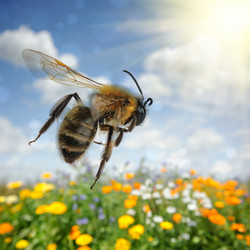How insects navigate
Insects can perform complex navigational manoeuvres almost anywhere on Earth. One of the navigation centres of the insect brain is the central complex (CX) – a brain area involved in sensory integration and motor planning. The EU-funded project BRAINVISUALECOLOGY (Linking neuronal activity to ecology: How the sensory environment of a species shapes the neural representation of the external world in the insect brain) explored how brains use sensory information to help insects orientate themselves. The study used bees because they are easy to study and are widely adapted to different environments. Researchers compared the anatomy, physiology and behaviour of different types of bees to previously studied locusts and butterflies. The results showed that the CX underlies general orientation behaviour in all of these insects, independent of their lifestyle. Once the scientists established that the CX plays the same role in the navigation of different insects, they set out to determine why different insects have different ways of navigating. BRAINVISUALECOLOGY developed a specialised virtual reality light-emitting diode (LED) arena in which they simulated a changeable environment to study the bees' behaviour. The arena helped the scientists to identify an entirely new neural network of cells that explains differences in navigation between species. Researchers shared their data by developing an online database for storing, accessing and displaying 2D and 3D morphological data of bee neurons. The database helped to establish an international working group of researchers and allowed more LED arenas to be developed. Project findings are not only important to understand navigation in bees and other insects, they allowed scientists to develop algorithms for animal navigation. These algorithms can be used to programme autonomously navigating robots, like flying drones and self-navigating cars.







